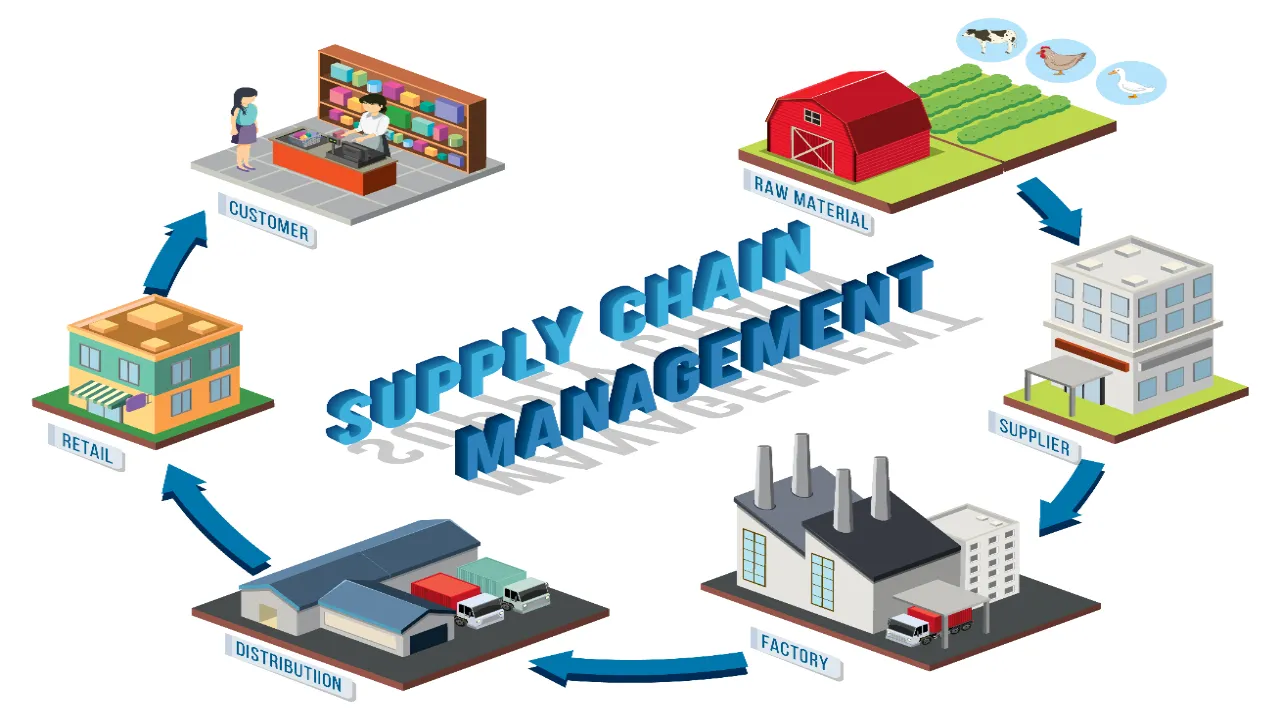
Innovation and Development walk parallel to each other in a developing economy. And, this innovation has made our lives easier and comfortable to lead. But everything doesn’t last longer until things are well planned and managed, art of proper management must be followed for the proper implementation of actions. The pandemic has disturbed every sector of development in some or the other way, and one such sector which was heavily disturbed was the “Supply Chain.”
What is Supply Chain Management & Traditional Ways of doing it
Supply Chain Management deals with the control of the flow of goods and services and including all the processes from raw materials to the end result. It contains the continuous efforts by the various supply chain firms to thrive and run various supply chains in most fruitful and efficient manner.
The traditional form of Supply Chain Management and logistics involves several steps.
Let us consider an example of a book to understand in detail the process involved in it:-
- Gathering of raw materials: The first step involves the collection of raw materials that is required to make the final product.
- Collection of material from the suppliers: The manufacturers must collect all the required raw materials from different suppliers to produce the ultimate finished product.
- Manufacturing: The manufacturer then initiates and completes all the processes required for producing the finished product. Various procedures may be involved like making paper, binding of papers, covering the book, etc.
- Distribution to the customers: A process where the finished product, i.e. the book in this example, is distributed to the retailers for further distribution.
- Utilization by the end customers: The last step is the purchase of the finished products by the customer. In this example, the book may be used for the various purposes by different people.
This is how the traditional Supply Chain Management system works. Today, as technology has been evolving; the traditional methods are being replaced by modern and digitalized ideas and strategies.
Digitalized Vs Traditional Supply Chain Management
Traditional Supply Chain Management
This is a flow followed in Traditional Supply Chain Management where the flow looks very rigid and compact.
Digitalized Supply Chain Management
This is a flow of a Digitalized Supply Chain Management where the flow looks flexible with easy transmission of information.
Let’s understand this in detail with the help of an example;
If a celebrity posts about a certain product on their Social Media handles it is viewed by a large audience and they get attracted to the product, which would let an increased demand of the product. If an organization is following a traditional method of SCM (Supply Chain Management) then flow of information will take ample amount of time and the demand keeps on fluctuating leading to the decreased demand of the product. Similarly, if an organization is following digital SCM then all the channels are digitally connected hence, the things are planned in prior, leading to the fulfilment of Customer’s demand. This is Supply chain digital transformation in the market domain.
Advantages of Digitalized Supply Chain Management
Digitalization has impacted Supply Chain Management to a large extent:-
- More Flexible- Digitization added to the Supply chain automatically adds flexibility in actions. When things are well planned and monitored on a digital medium, it becomes easy to track the products and receive more information about them.
- More Efficient- When things are managed digitally there control becomes efficient. You get full information of the product from packing to delivering within no time. Robots handle the process (pallets/boxes as well as single pieces) completely automatically along the warehouse process – from receiving/unloading of products to putting away to pick, pack, and ship.
- More Accurate- Increased transparency of the products gives accurate information about the products and services. This digitization is helpful to track the information of heavier and bigger goods whose shipment is from trucks, ships etc.
Digital Supply Chain Management Courses
In response to the present situations, and with growing demand of digitalization in Supply Chain Management, various schools, colleges, & institutes have started designing advanced curricula to teach new & futuristic ways to manage supply chain. Also, many supply chain organization in India and outside are having their employees upscale their skills under such advanced courses in Supply Chain Management. In general, these courses are empasizing on the topics such as – Risk Mitigation, Data Analytics, and Production Reshoring—while also carving out room to explore more intangible topics like Ethics, Communication, Digital Tools, AI, AR, and Sustainability. Today, many organizations in India provide courses in Digital Supply Chain Management to the learners.
Conclusion
Digitalization is nothing but a revolution nowadays. Transforming everything to digital is challenging indeed. Digital supply chain examples include IT purchasing functions relied large vendors to manage their IT supply chain solutions. There are many companies transforming their supply management methodologies to a Digital supply chain companies in order to enhance their product value and establish themselves in the market domains.